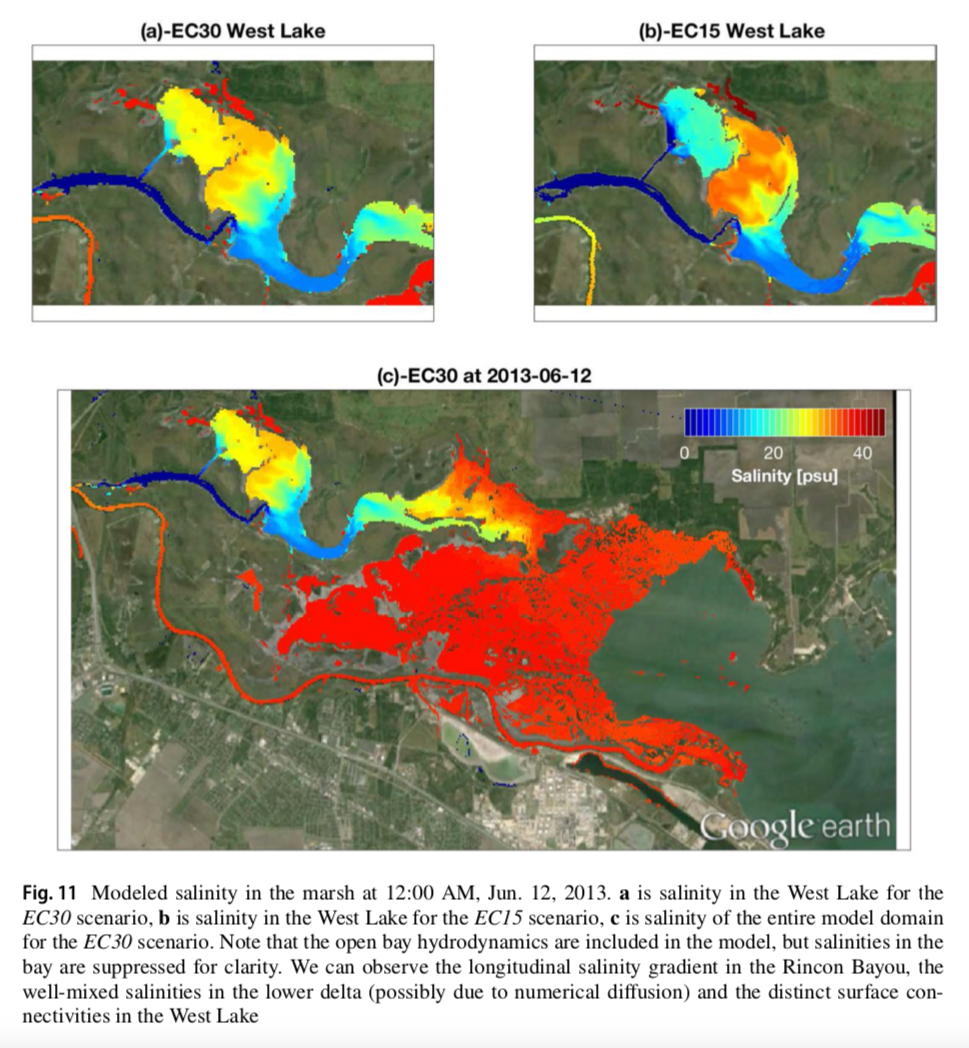Model instability and channel connectivity for 2D coastal marsh simulations
ABSTRACT: Reduced freshwater inflow into a coastal marsh can result in environmental stress through episodic hypersalinity. Hydrodynamic models can be used to evaluate salinity-control strategies when freshwater supplies are constrained by climate or increasing urban demands. However, there remain significant scientific, engineering, and technical barriers to correctly modeling salinity transport in such systems. In particular, the numerical instability at the wetting/drying front caused by strong wind stress and steep surface gradient and the inappropriate representation of the complex channels at practical computational scales are unsolved problems. This study documents recent achievements in modeling the time-space evolution of shallow marsh salinity using the Fine Resolution Environmental Hydrodynamic model (Frehd) applied to the Nueces River Delta (Texas, USA). The 2D depth-integrated model is tested across a variety of bathymetric representations derived from high-resolution lidar data to evaluate the effects of grid refinement and a variety of bathymetry processing methods. Novel treatments are proposed and tested to suppress unrealistic velocities and scalar concentrations caused by rapid wetting/drying and strong wind stress. The model results are compared with the field data collected at 12 spatially-distributed locations across the marsh, yielding good model-data agreements for free surface elevation and reasonable agreements for salinity. Analyses of results indicate that the critical difficulty for capturing salinity transport is in correctly representing connectivity effects (both blocking and channel features) at fine scales on the coarse grid without overestimating fluxes. Modeled water surface elevations are relatively robust to poor representation of connectivity whereas the salinity distribution is strongly affected, particularly at key choke points. This study defines a set of future challenges in developing automated methods for evaluating and preserving geometric connectivity at practical model grid resolution.


